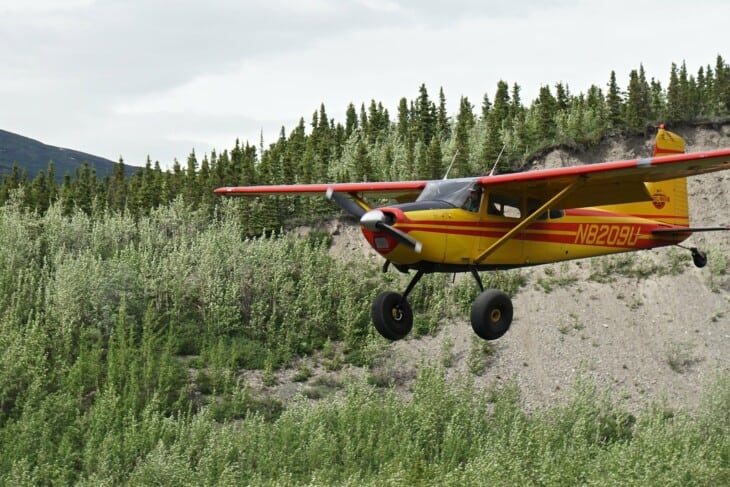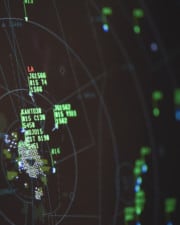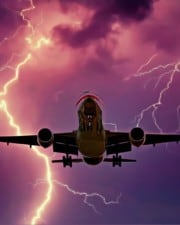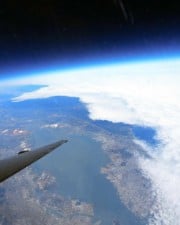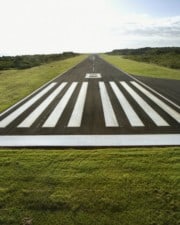When it comes to all the different types of pilots out there, bush pilots have arguably done more to make the world a smaller place than their military and commercial counterparts have combined. The role of bush pilots is something that is almost as old as aviation itself, and provides a lifeline between many groups of people and the outside world. But what exactly is a bush pilot, and what do they do that makes them so special?
Bush pilots operate their airplanes in remote areas, where there are no proper airfields or landing strips, and the terrain can be very rough. In such regions, bush flying may be the only way to get supplies and medical help to inhabitants.
Where Did The Term ‘Bush Pilot’ Come From?
Since the nineteenth century, the word ‘bush’ has been understood to mean areas of wilderness or forest, far from any major settlement or highway. Such regions may be completely uninhabited, or they may be sparsely populated.
Where there are people, there is usually a need for contact with the rest of the world.
In the days before aviation, traveling into the bush would have meant hours or days on foot or on horseback, with very limited ability to carry goods, or to ferry a sick villager who needed hospital care.
Bush pilots are skilled at flying in and out of remote areas that have no paved runways.
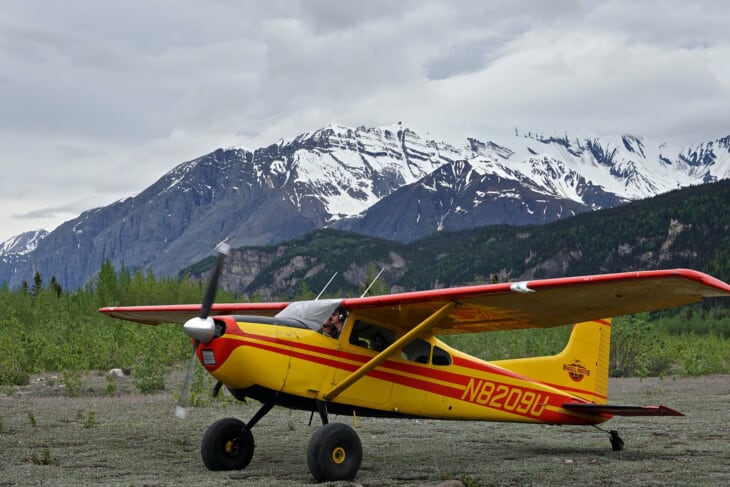
Bush airplanes are often adapted to the terrain they will be using to land and take off – they may have unusually large wheels and tires, enabling them to use fields as runways, or they may be equipped with floats for landing on water.
Inhabitants of remote areas rely on bush pilots to carry mail, newspapers, passengers and all manner of essential items, which they would otherwise have to go without.
Who Were The First Bush Pilots?
On June 8, 1919, Stuart Graham, a World War I pilot born in Boston in 1896, and raised in Nova Scotia, delivered a Curtiss HS-2L Flying Boat to Lac-à-la-Tortue (now part of Shawinigan, Quebec, Canada) after a record 645 mile cross-country flight.
The bush flying scheme was the brainchild of Ellwood Wilson, a Canadian forester. The airplane’s purpose was to look out for forest fires and map remote wooded areas.
A second aircraft of the same type was delivered by Graham a few days later. Both airplanes were on loan from the US Navy.
Assisted by his engineer, Walter Kahre, Stuart Graham became the world’s first official bush pilot, operating fire patrols and airborne photography missions from the summer of 1919 onward.
Two years into their new career, the men found their operating costs spiraling, and looked to Wilson’s Laurentide Air Services company for financial help.
Thanks to Laurentide, the flights were able to continue, and bush flying became firmly established in eastern Canada. Further west, Wilfrid May, a former naval pilot, arranged to sell a Curtiss JN-4 to the city of Edmonton for twenty-five Canadian dollars.
After setting up May Airplanes Ltd., May hired pilot George Gorman and mechanic Peter Derbyshire, who began a bush-flying newspaper distribution service.
In Alaska, in 1924, Carl Ben Eielson, a World War I flier from North Dakota, of Scandinavian ancestry, also used a Curtiss JN-4 to set up an airmail and passenger bush flying service. Tourism was soon added to the list of bush flying applications in Alaska.
Bush pilots soon began to operate in remote areas all over the world, and the practice continues to this day in areas where there is no other means of access.
What Special Skills Do Bush Pilots Need?
Taking off and landing in the bush calls for a whole different skill set than that needed for conventional airfield-based flying. A bush pilot needs to be able to land on, and take off from, grass fields, dirt strips, makeshift roads, beaches and patches of scrubland or desert.
When dealing with such terrain, the goal is to spend as little time rolling on the ground as possible, so the pilot must be able to achieve short take-off and landing rolls.
Additionally, most bush airplanes are taildraggers, as the main landing gear of a taildragger is more robust than tricycle gear.

Therefore, a bush pilot needs to be skilled in steering a taildragger on the ground, which is achieved by differential braking, rudder action, and differential thrust if the airplane has twin engines. Taking off and landing a taildragger is more challenging than a tricycle-gear airplane.
One hazard, when taking off or landing, is a taildragger’s tendency to ground-loop. If the tail begins to drift to one side, the pilot must immediately correct using rudder input, or the airplane may turn abruptly through 180 degrees, possibly causing extensive damage.
Should a bush airplane be damaged by a ground-loop incident at a remote location, it may not be easy to fly in spare parts and complete the repair work, so the pilot’s flying skill is essential to keep the aircraft in good working order.
Managing approach speed, altitude and descent rate is extra important for a bush pilot. There is no long, paved runway to get rid of excess energy by making a lengthy roll-out after touchdown.
It’s essential to come in to land at minimum safe speed, and stop the airplane as quickly as possible.
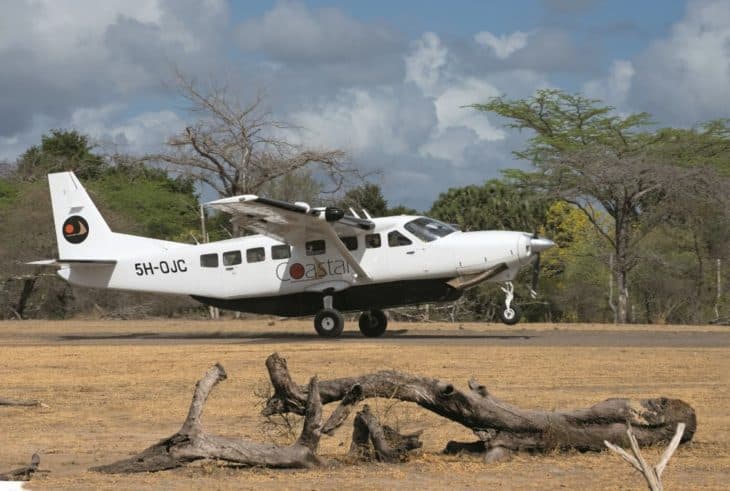
A great way for bush pilots to sharpen their short take-off and landing skills is by competing with one another at special organized events, such as Alaska’s annual springtime Valdez STOL (Short Take-off and Landing) competition.
At that event, it’s amazing to see bush pilots flick the tail wheel off the ground and get airborne after an insanely short roll, fly a circuit and come to a full stop almost within a fuselage length of touchdown.
What Training Do Bush Pilots Need?
Usually, pilots require 500 hours of flight experience before they transition to bush flying. An instrument and commercial pilot rating is a must, with high-performance endorsement, and an airframe-and-power-plant license in case running repairs are needed while away from base.
If you are thinking of becoming a bush pilot, you can get training at various sites around North America.
You can learn to fly airplanes with floats, skis and tundra tires (see below). If you did your pilot training in Canada, you can get FAA approval via a Foreign License Validation Certificate (FLVC).
How Do You Get Hired As A Bush Pilot?
Operators of bush flights are generally looking for pilots who are happy to get involved in all aspects of the operation, not just flying the airplane.
You are in with a much better chance of getting hired if you have mechanical training and experience, as well as your commercial pilot rating.
Recruiters will be looking for candidates with the right attitude, as well as the skills mentioned above. If you’re the type who enjoys a challenge and relishes finding solutions, rather than telling others what to do, bush flying might well be for you.
How Many Days And Hours Do Bush Pilots Work?
That depends entirely on the type and location of the bush flying they do. In some cases, bush pilots work on a five-year cycle, with four years flying followed by a year off. Bush flying can be seasonal, for example if tourism is involved.

Bush pilots generally can’t expect office working hours. A bush pilot might be called on to airlift a heart attack patient to a medical center in the middle of the night.
There is a certain kudos and romance associated with the world of bush flying.
Bush pilots have the satisfaction of seeing the immediate benefit of the work they do, to people who would otherwise be cut off and deprived. Bush pilots mention a sense of freedom, and a love of their job.
How Much Are Bush Pilots Paid?
Remuneration for a bush pilot typically depends on hours of work, level of risk, and the type of operation your employer is running. A new bush pilot might start on $2,500 monthly. An experienced bush pilot, flying a larger airframe, might bring in up to $8,000 per month.
Bush flying companies fall into the category of non-scheduled operators. Commercial pilots in that category have an average annual wage of $85,000.
In some instances, bush pilots are not salaried at all, but rely on donations, as is the case for missionary bush pilots.
What Airplanes Do Bush Pilots Fly?
Turbine airplanes are starting to replace piston-engined aircraft for bush flying, because of the difficulty of obtaining avgas in some remote regions. However, there are still many piston-engined bush airplanes in service.
High wings are preferred, to reduce the risk of damage by uneven ground and obstacles such as rocks or vegetation. High aspect-ratio wings – that is, long and slender – give the best lift for short take-off and landing performance.
Flaps and slats are also essential, to improve lift at low speed.
As mentioned, taildragger landing gear is better than tricycle gear, because the former is less of a weight penalty and reduces drag, as well as being stronger.
If a tricycle airplane were used, and the nose wheel sustained damage, the airplane would become unflyable until repaired. The same is not true for tail wheel damage, which would be unlikely to impair the airplane’s ability to fly.
Tundra tires – very large tires, that work at low inflation pressure – are fitted to the main gear, to cushion landing and provide good roll performance on uneven surfaces. Tundra tires have diameters up to 35 inches.
Bush pilots describe tundra tires as the best of the modifications to their airplane, as they open up thousands of ‘runways’ that would otherwise be unusable.
Larger wheels incur a weight penalty, but it’s worth it, because of the protection the large wheels give the airframe, when rolling over unseen obstacles.
When landing on a beach or lake shore, tundra tires enable the bush pilot to hydroplane the aircraft on the water, removing some of the airplane’s weight from the wings and putting it onto the main gear.
That can reduce the airplane’s speed to as low as 25 mph, which makes for a much shorter landing roll on reaching dry land.
For bush landings and take-offs on water or snow, floats or skis can be fitted, respectively.
There is a large range of airplane models that satisfy the above criteria. Consequently, you will find many different airplanes being put to use by bush pilots – including Cessnas, Pipers, Gippslands and many kit aircraft designed and build by the Rutan brothers.
The Piper Super Cub has been a popular airplane with bush pilots since 1949, with over 10,000 airframes built over a period of forty years.
Its climb performance and taildragger configuration make it highly suited to the needs of bush pilots. It can handle the modifications that are needed for bush flying.
One such modification is high-compression pistons that can increase the Lycoming engine’s power output to 160 horsepower. The two-notch flaps can be configured easily for short take-off (1 notch) and for short landing (2 notches).
A bush pilot may choose not to have a starter motor on the airplane’s engine, because it adds weight to the nose and increases the risk of a nose-over on short landing.
Instead, the pilot will turn the propeller by hand to start the engine, just as pilots have done since the very first propeller-driven aircraft. If the pilot is flying alone, he or she can turn the propeller from behind, while standing on the airplane’s door sill.
That way, there is technically a pilot at the controls, from the moment of engine start. Of course, if there is another person at hand, he or she can be the one who turns the propeller while the pilot sits at the controls.
What Are The Basics of Bush Piloting?
No other kind of flying captures the thrill and sense of adventure that come bundled with back country bush flying. Bush pilots carry supplies and people to some of the most beautiful, remote locations on the planet.
Alaska Bush pilot Bob Breeden advises his fellow pilots not to try to cover too much country at a time. “Explore slowly and enjoy the beautiful scenery. Living in the wilderness, flying in the mountains, is a wonderful experience. Safety is very important.”
Breeden reminds us that bush flying can be deadly. He advises keeping the airplane light, to give the best performance capability, especially climb rate to avoid terrain – your aircraft must be able to climb faster than the mountain ridge that is rising in front of you.
Bob’s bush pilot son, Bobby Breeden, emphasizes the importance of checking the weather. “Know the weather patterns, and study the weather maps before every flight. Sometimes the right decision is to stay put after landing on high ground, and wait for the weather to clear before taking off again.”
Being a bush pilot carries a unique set of risks and rewards. It is vital to know how to predict the weather in the region you are flying in. Around high terrain, winds and weather conditions can change in a heartbeat, and it’s of paramount importance to be ready for that.
Your instrument skills must be kept razor sharp, as you could find yourself in full instrument meteorological conditions with no visibility at all, surrounded by mountainous terrain. You should practice terrain escape techniques until they become second nature.
Unlike more conventional types of commercial flying, bush pilots often need to make decisions on their own, without any guidance or tailored checklist, about what to do, when circumstances such as weather change abruptly. In those situations, safety must be the overriding decider.
Veteran bush pilot Vern Kingsford tells bush pilots they should always stay just a little bit scared. That improves alertness and situational awareness, removing the danger of complacency that can have emergencies catch us unawares.
“Just because you got in there yesterday, doesn’t mean you can necessarily get in there this time,” he warns.
“Bring the airplane home,” says highly experienced bush pilot Richard Wien, on the subject of deciding whether or not it’s safe to carry out an operation.
“Someone may get mad at you for leaving cargo behind, but the most important thing is not to get hurt. Always keep that in mind.”
A bush pilot’s watchwords are preparation, judgment and practice. A bush pilot always calculates take-off and climb performance before departure.
They never use guesswork. Bush pilots keep their airplane’s weight down, and make more than one trip if the payload is too heavy.
Fuel planning is a potential lifesaver for a bush pilot. When flying without a full fuel load, to minimize weight, the pilot should always know exactly how much fuel is on board the aircraft.
Like an airline pilot calculating the decision speed for take-off, a bush pilot should always mark a decision point on the ‘runway’ and, if the airplane’s speed is less than seventy percent of take-off speed at that point, the take-off should be aborted.
A bush pilot should never take unnecessary risks.
Related Posts
